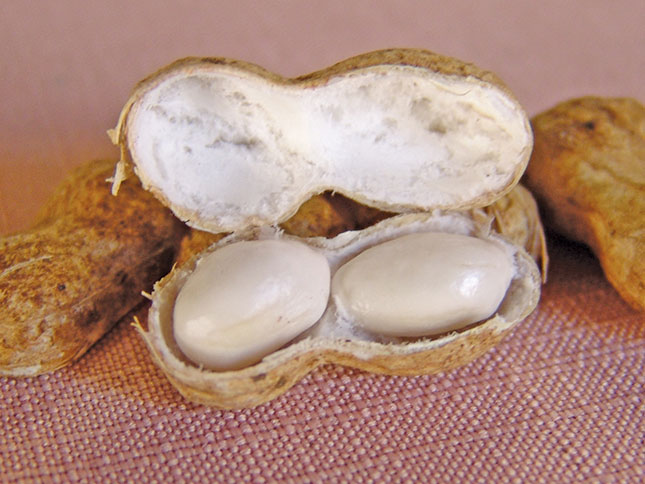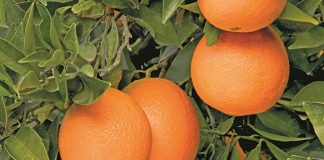
Photo: FW Archive
However, the crop is expected to become more important as it is an excellent rotation crop that can replace maize as a monoculture because it enriches the soil with nitrogen.
Groundnuts also fetch a good price on local markets.
Soil requirements
The groundnut plant produces runners (horizontal stems) that bear flowers at each node. These self-pollinate and produce an anchor or peg that penetrates the soil. The groundnut pod grows underground at the tip of the peg.
The topsoil should have a low clay content (below 20%) with a loose structure that the peg can penetrate freely. A high clay content in the topsoil may cause the groundnut pegs to break at harvest.
Compaction can also be a problem if the topsoil has a high fine-sand fraction.
The seedbed should be deep and without compaction layers to accommodate the groundnut plant’s root system. Avoid shallow soils; these have low water retention capacity and may be prone to water logging.
Soils with a high production potential for groundnuts are typically deep (900mm to 1 200mm), structureless yellow, yellow-red or red with a sandy loam to sandy texture in the topsoil, and without physical limitations such as compaction. Avalon, Bainsvlei, Clovelly, Hutton, Pinedene and Glencoe are all suitable.
Moisture & temperature requirements
Groundnuts need sufficient moisture in the soil at planting. On the other hand, too much rain during harvesting can reduce the quality of the crop if the crop is left to dry in the land.
The crop requires a growth period with high temperatures and at least 160 frost-free days.The lower limit for groundnut germination is around 18°C. Temperatures between 20°C and 30°C will result in a 95% germination rate. At 33°C, this declines to 84%.
The optimal germination temperature is thus between 20°C and 30°C, with a minimum of 18°C.
The temperature of the water absorbed by the seed is crucial for germination. If it is initially low and slowly increases, germination will be reduced. Planting in cold, wet soil is thus not advised. By contrast, planting in warm soil will result in quick germination and healthy seedlings.
The warmer the environment, the faster the plant will reproduce. Flower formation is related to mean temperature as long as the difference between the day and night temperatures is less than 20°C.
Groundnut seed
Groundnut seed is easily damaged, so handle it with care; damaged or split kernels will not germinate. Plant high-quality seed. Poor-quality kernels should not be kept for seed for the following season.
Drying the seed
Wherever possible, use only naturally dried groundnuts as seed, unless you can control the heat applied in artificial drying very carefully.
Seed coating agents
Groundnut seed is susceptible to fungal infection in the soil. Fungicidal seed treatment will limit this problem and increase the stand in the field. Mancozeb and Thiram are the two seed coating agents currently registered for use on groundnuts.
It is essential to coat the seed completely. Mechanical mixing is strongly recommended.
Cultivar choice
All cultivars can be grown under irrigation. For later planting (late November to mid-December), use Kwarts. Harts is the cultivar with the shortest growing season.
Anel and KanGwane Red do well under dryland conditions and are suitable for the developing farmer.
Seed yield depends largely on the cultivar used and production conditions.
Under irrigation and with optimal management, Akwacan yield between 3,75t/ha
and 4t/ ha. Under low-yield conditions, Robbie, Sellie, Kwarts, Anel, PAN 9212 and Akwa can produce an acceptable yield. These cultivars are also recommended for warm, dry areas such as North West, and western Free State.
Akwa, Anel, Jasper, Kwarts, Robbie, PAN 9212 and Sellie are suitable for high-potential conditions.
Crop rotation
To reduce risk, grow groundnuts in rotation with grain crops. Groundnuts have been shown to improve the yield of the following maize and other grain crops by up to 20%.
Grow groundnuts after the main crop such as maize, small grains, sorghum or millet, but not after cotton or soya beans due to the risk of disease.
Source: ‘Groundnut production: a concise guide’, by AJ Cilliers, ARC Grain Crops Institute, Potchefstroom.












